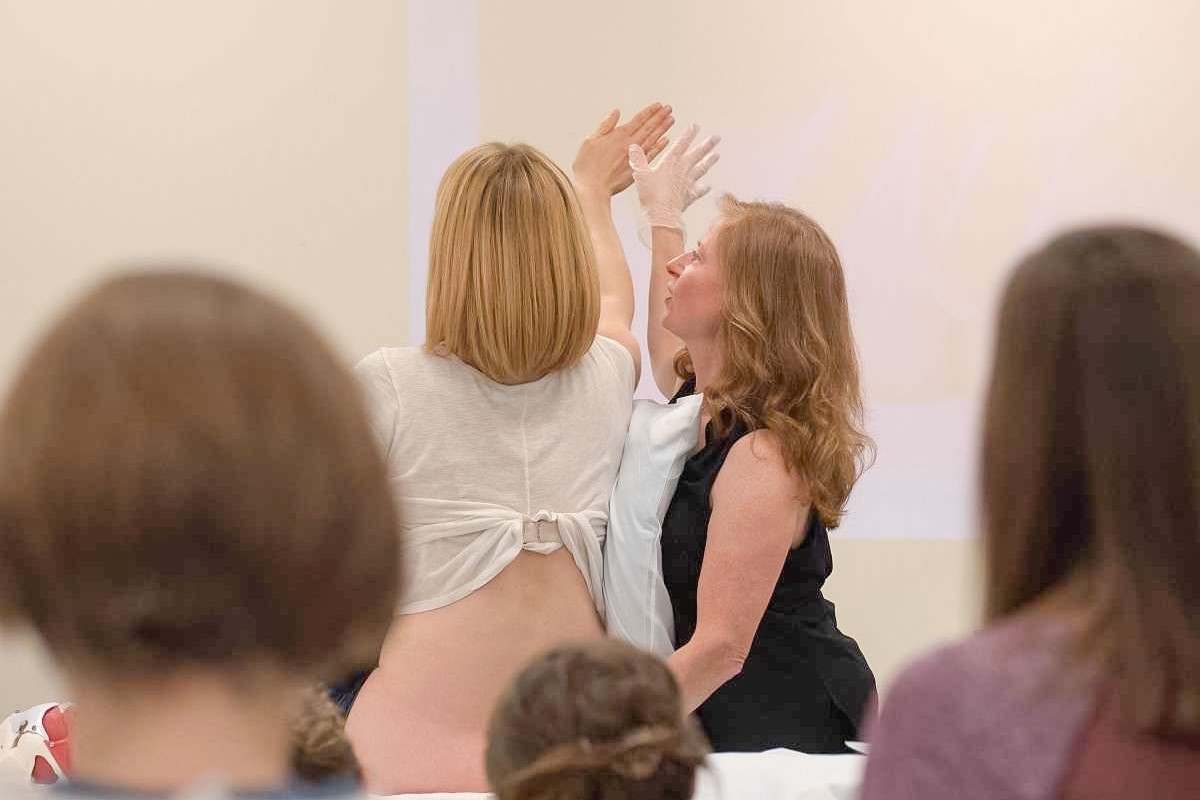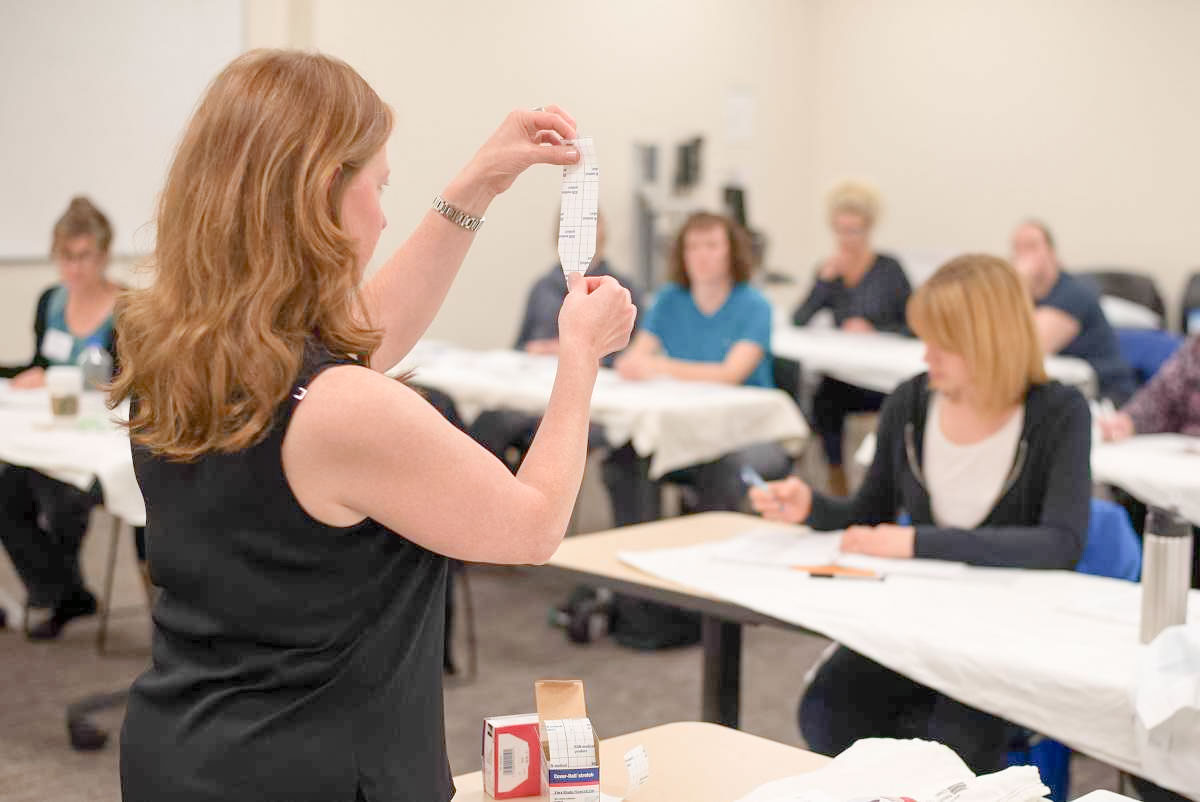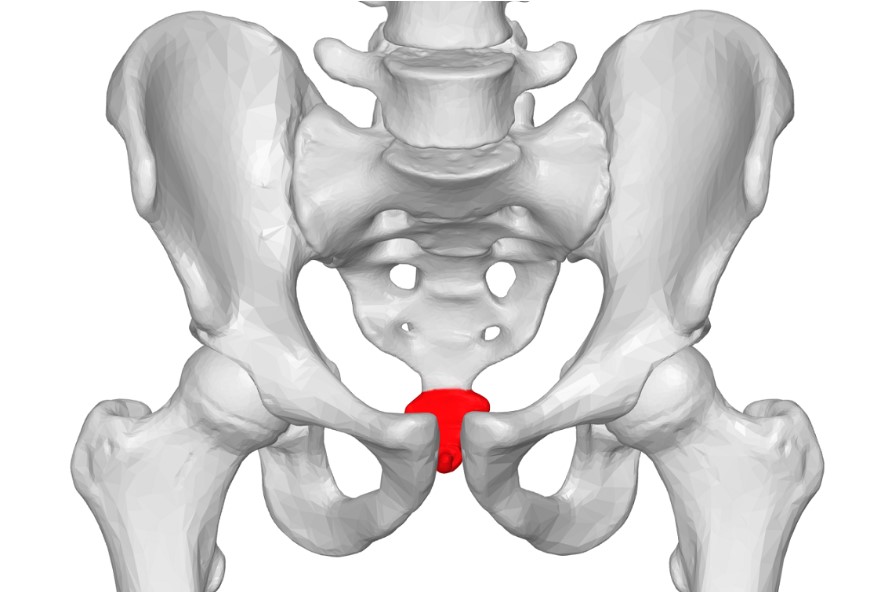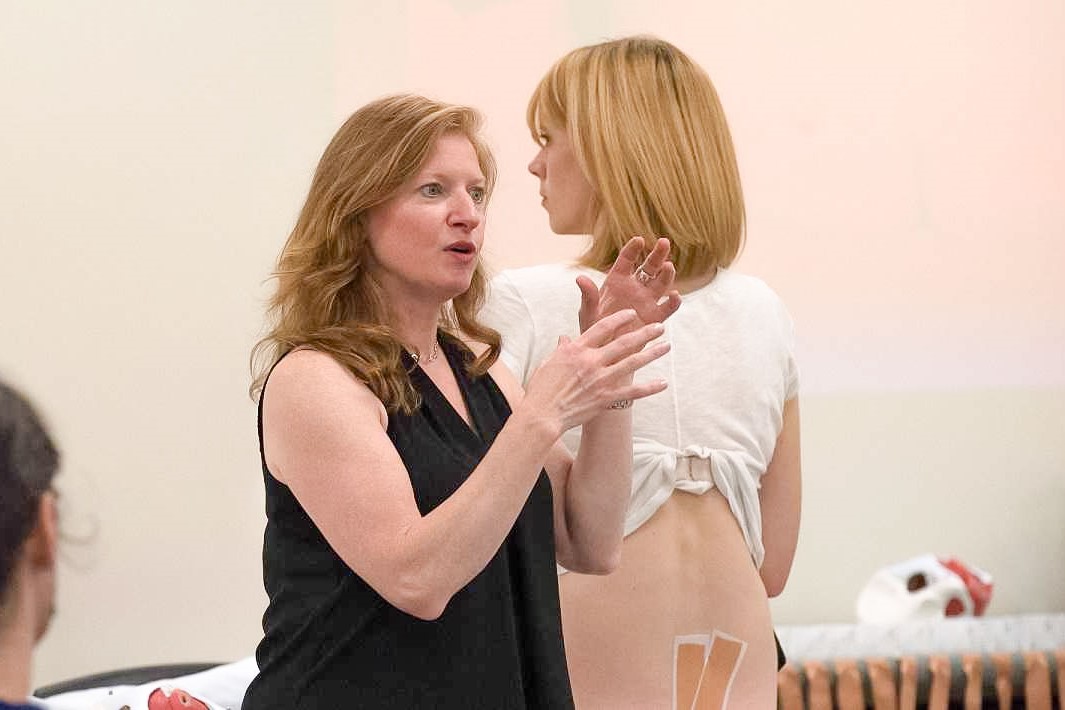Coccydynia and Painful Sitting: Orthopedic and Pelvic Floor Muscle Implications
| Price: $495 (Early Registrant Price $475) Experience Level: Intermediate Contact Hours: 14 |
Coccyx pain is a common, frustrating condition for the patient who often has difficulty sitting, one of the most important tasks necessary for daily activity. Patients who find help from a pelvic rehabilitation provider have often experienced pain near the tailbone for long periods of time, leading to chronic pain in addition to neuromusculoskeletal dysfunctions. This two-day continuing education course allows the therapist to focus on this vital, sensitive area to learn and refine skills in assessment and treatment. Anatomy, pathology, and detailed palpation skills of the coccyx region is instructed. Evidence is utilized to provide a solid foundation in current evaluation and interventions for coccyx pain. Tools ranging from manual (both external and internal) therapies, taping, therapeutic exercise, sitting modifications, modalities, and outcomes surveys will be included in the course.
In addition to learning local evaluation and treatment of the coccyx, participants will learn how to apply principles of biomechanics to the pelvis as they relate to the trunk, spine, and lower extremities. Sacral dysfunction, which can also be a main contributor to coccydynia, will be addressed with various mechanical approaches. The coccyx has a critical relationship to the pelvic floor muscles, and coccygeal pain can create or perpetuate pelvic floor dysfunction such as painful voiding or defecation and difficulty emptying the bladder or bowels. This course instructs the attendee in the functional movement patterns of the coccyx.
Medical testing and medical interventions including pharmacology and surgical approaches are discussed. At the conclusion of this training a therapist will have the ability to communicate with a provider about clinical findings and perform appropriate examination skills and treatments for the patient who has coccyx pain. The class was written specifically for therapists who are interested in refining skills for treating coccydynia. Lila Abbate, course instructor, shares her extensive experience in clinical care and teaching so that therapists can help patients recovery effectively and efficiently.
Audience:
This continuing education seminar is targeted to physical therapists, occupational therapists, physical therapist assistants, occupational therapist assistants, registered nurses, nurse midwives, and other rehabilitation professionals. Content is not intended for use outside the scope of the learner's license or regulation. Physical therapy continuing education courses should not be taken by indivuals who are not licensed or otherwise regulated, except, as they are involved in a specific plan of care.
Lab Attire:
Participants are encouraged to wear loose fitting shorts to the course. There is external palpation and internal palpation and treatment labs.
Recommended Prior Coursework:
PF2A - Pelvic Floor Function, Dysfunction and Treatment (Level 2A) or prior experience with internal rectal evaluations is strongly recommended.
Upon completion of this continuing education seminar, participants will be able to:
1. Identify the structures of the coccyx and understand the anatomy and nerve innervation to the coccyx and its adjacent structures.
2. Explain the basic function of the coccyx and the role of the coccyx relating to the sacrum, inominates and lumbar spine during sitting, standing and walking.
3. Understand normal coccyx placement, displacement, and deviation.
4. Explain the function of the coccyx and how it relates to sitting, bowel function and the birthing process.
5. Review of the literature regarding coccyx pain and medical testing, medical treatments, medications and surgical techniques.
6. Apply the principles of joint mobilization, muscle energy techniques, Hesch Method, Strain-Counterstrain and Theile’s massage to change coccyx position.
7. Effectively apply an up- or downtraining program for patients with coccyx dysfunction.
8. Effective use of modalities and taping techniques for neuromuscular re-education.
9. Create an appropriate plan of care relating to a patient’s symptoms and physical examination.
10. Select the most appropriate physical findings and use of validated questionnaires to determine a treatment plan.
11. Learn basic treatment options to relieve the patient of coccyx pain during defecation and sitting.
|
Day One: |
Day Two: |
We always want to hear from those interested in hosting our courses. We work with healthcare organizations of all types, sizes, and locations. Please, Contact us about Hosting Coccydynia and Painful Sitting: Orthopedic and Pelvic Floor Muscle Implications or any other course!
Lila is a wonderful presenter – knowledgeable. Helpful, organized. She makes the class fun!
- Dale Davison, PT - Middletown, DE
Excellent course with good balance of didactic and lab learning.
- Laura C Suter, MPT, CLT - Cary, NC
A great course to trouble-shoot your complex coccydynia patients.
- Cynthia Boyer, PT, DPT - San Antonio, TX
Lila has a great sense of humor. She kept the audience engaged throughout the course. The material covered was a thorough overview of the subject. She was great at showing the big picture then zooming into the coccyx then back at seeing the whole/all the pieces put together to make the whole.
-Vanda Szekely PT - Duvall, WA
Lila makes the class fun and entertaining. I have more tools to evaluate what is working/moving/functional and what isn't, this will help me investigate further with the patient and find more of the true sources of dysfunction.
-Jennifer Phillips, DPT - Spokane, WA
This course exceeded my expectations significantly! It provided an extremely comprehensive and holistic view of coccydynia.
-Justine R. Payne, PT, DPT - Manhasset, NY
Great course! I loved the whole body thinking and out of the box/creativity with treating the coccyx! Lila has great knowledge and I learned a lot.
-Jennifer Greene, DPT - Long Beach, CA
This course was exactly what I needed--plenty of lab time, excellent review of pelvic floor internal and excellent description and demonstration.
-Heather Dodds
Lila! Holy Moly she knows what she's talking about! I am amazed at how comprehensive and broad her clinical reasoning. The taping techniques were also great. I just wanted more!
-Stephanie Stamas
My personal objective was beyond met.
-Andrea Wood
I appreciate the knowledge and ability of the instructors and the ease at which questions were answered. I can't wait to get back to the clinic!
- Carolin Bentley
This course helped to organize and consolidate my treatment and examination.
-Mollie Tonjocol, MPT -Roseville, CA
Lots and lots of information. Immediately applicable to my patient population. It seems we've all come with a variety of tools in our box and Lila touches on so many topics that everyone can take something new back home.
-Elizabeth G. Franklin, PT, LMP -Maple Valley, WA
Good course with good information/ immediate use in the clinic. Good ideas for HEP.
-Kathy Probasco, PT -Kansas City, MO
This class was wonderful. I learned so much and can't wait to use the techniques on my patients.
-Laura Bielak, PT, DPT -Golden, CO





